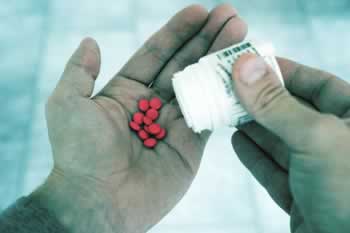The rising cost of prescription medications has become a significant concern for patients, healthcare providers, and payers alike. As a result, implementing effective cost containment strategies has become crucial for maintaining sustainable healthcare systems. One of the most powerful tools in this endeavor is the strategic use of generic drugs within formulary management. This comprehensive guide will explore the best practices for leveraging generic drugs to achieve cost containment while ensuring high-quality patient care.
I. Introduction
A. Definition of formulary
A formulary is a carefully curated list of prescription drugs that a health plan, hospital, or healthcare system agrees to cover. It serves as a guide for healthcare providers when prescribing medications and helps manage drug costs while ensuring patients have access to safe and effective treatments.
B. Importance of cost containment in healthcare
Cost containment in healthcare is vital for several reasons:
- Improving affordability and access to care
- Ensuring the long-term sustainability of healthcare systems
- Reducing the financial burden on patients and payers
- Allowing for the allocation of resources to other critical areas of healthcare
As prescription drug costs continue to rise, implementing effective cost containment strategies through formulary management has become increasingly important.
II. Understanding Generic Drugs
A. What are generic drugs?
Generic drugs are pharmaceutical products that are equivalent to brand-name drugs in terms of dosage form, safety, strength, route of administration, quality, and intended use. They are typically produced and distributed without patent protection or exclusivity.
B. How do they differ from brand-name drugs?
The primary differences between generic and brand-name drugs include:
- Cost: Generic drugs are generally much less expensive than their brand-name counterparts.
- Appearance: Generic drugs may have different colors, shapes, or packaging compared to brand-name versions.
- Inactive ingredients: While the active ingredients must be the same, generic drugs may contain different inactive ingredients.
- Name: Generic drugs use the chemical name of the active ingredient, while brand-name drugs have proprietary names.
C. The approval process for generic drugs
Generic drugs must go through a rigorous approval process by regulatory agencies such as the U.S. Food and Drug Administration (FDA). This process includes:
- Demonstrating bioequivalence to the brand-name drug
- Meeting the same quality and manufacturing standards as brand-name drugs
- Providing evidence of stability and shelf life
- Submitting comprehensive data on the drug’s formulation and production process
“Generic drugs are critical to a sustainable healthcare system. They provide the same therapeutic benefits as brand-name drugs at a fraction of the cost, allowing more patients to access the medications they need.” – Dr. Janet Woodcock, Director of the FDA’s Center for Drug Evaluation and Research
III. The Role of Generic Drugs in Cost Containment
A. Cost savings potential
The use of generic drugs offers significant cost savings potential for healthcare systems, payers, and patients. According to the Association for Accessible Medicines, generic drugs saved the U.S. healthcare system $313 billion in 2019 alone[1]. These savings are achieved through:
- Lower production costs due to reduced research and development expenses
- Increased market competition, driving prices down
- Reduced marketing and advertising expenses
B. Impact on healthcare systems
The widespread adoption of generic drugs has far-reaching impacts on healthcare systems:
- Reduced overall drug spending
- Increased ability to allocate resources to other areas of healthcare
- Improved sustainability of public health programs
- Enhanced ability to provide coverage for high-cost specialty medications
C. Benefits for patients
Patients stand to gain significantly from the use of generic drugs:
- Lower out-of-pocket costs for medications
- Improved medication adherence due to affordability
- Increased access to necessary treatments
- Potential for better health outcomes through consistent medication use
IV. Formulary Management Strategies
A. Tiered formulary systems
Tiered formulary systems categorize drugs into different levels based on their cost and clinical value. A typical tiered structure might include:
- Tier 1: Preferred generic drugs (lowest copayment)
- Tier 2: Preferred brand-name drugs
- Tier 3: Non-preferred brand-name drugs
- Tier 4: Specialty drugs (highest copayment)
This structure encourages the use of lower-cost generic drugs by offering lower copayments for these medications.
B. Step therapy
Step therapy is a formulary management tool that requires patients to try less expensive, often generic, medications before “stepping up” to more costly alternatives. This approach:
- Promotes the use of cost-effective treatments
- Ensures that expensive medications are used only when necessary
- Helps identify patients who respond well to lower-cost therapies
C. Prior authorization
Prior authorization requires healthcare providers to obtain approval from the health plan before prescribing certain medications. This strategy:
- Ensures appropriate use of high-cost drugs
- Encourages the use of preferred generic alternatives
- Helps manage utilization of medications with potential for misuse or abuse
D. Mandatory generic substitution
Some formularies implement mandatory generic substitution policies, which require the use of generic drugs when available, unless the prescriber specifically requests the brand-name version. This approach:
- Maximizes generic drug utilization
- Significantly reduces drug costs
- Allows for exceptions when medically necessary
V. Implementing Generic Drug Policies
A. Educating healthcare providers
Successful implementation of generic drug policies requires comprehensive education for healthcare providers. This education should focus on:
- The safety and efficacy of generic drugs
- The cost-saving benefits of generic prescribing
- How to address patient concerns about generic medications
- Updates on newly available generic alternatives
B. Patient communication and education
Effective patient communication is crucial for promoting generic drug acceptance. Strategies include:
- Providing clear information about the equivalence of generic drugs
- Explaining the cost benefits of choosing generic medications
- Addressing common misconceptions about generic drugs
- Offering resources for patients to learn more about their medications
C. Overcoming barriers to generic drug adoption
Several barriers can hinder the adoption of generic drugs:
- Prescriber habits and preferences
- Patient perceptions and brand loyalty
- Influence of pharmaceutical marketing
- Concerns about quality or efficacy
To overcome these barriers, healthcare systems can:
- Implement electronic prescribing systems with generic drug alerts
- Provide financial incentives for prescribing generic drugs
- Conduct regular reviews of prescribing patterns
- Offer ongoing education and support for both providers and patients
VI. Evaluating Generic Drug Quality and Efficacy
A. FDA regulations and standards
The FDA maintains strict regulations and standards for generic drugs, ensuring that they are:
- Pharmaceutically equivalent to the brand-name drug
- Bioequivalent in terms of rate and extent of absorption
- Manufactured under the same quality standards as brand-name drugs
- Subject to ongoing monitoring and inspections
B. Bioequivalence studies
Bioequivalence studies are a critical component of generic drug approval. These studies:
- Compare the absorption of the generic drug to the brand-name drug
- Ensure that the generic drug delivers the same amount of active ingredient to the bloodstream
- Demonstrate that the generic drug will have the same clinical effect as the brand-name drug
C. Addressing concerns about generic drug quality
Despite rigorous standards, some concerns about generic drug quality persist. To address these concerns:
- Educate stakeholders about the FDA’s approval process and ongoing monitoring
- Share data on generic drug performance and patient outcomes
- Encourage reporting of any adverse events or quality issues
- Maintain transparency in the generic drug supply chain
VII. Maximizing Generic Drug Utilization
A. Identifying opportunities for generic substitution
To maximize generic drug utilization, healthcare systems should:
- Regularly review formularies to identify brand-name drugs with generic alternatives
- Analyze prescribing patterns to identify areas for improvement
- Implement clinical decision support tools to suggest generic options at the point of prescribing
- Collaborate with pharmacy benefit managers to identify cost-saving opportunities
B. Monitoring patent expirations
Staying informed about upcoming patent expirations is crucial for formulary management. Strategies include:
- Maintaining a database of patent expiration dates for key medications
- Developing plans to transition to generic versions as soon as they become available
- Communicating with providers and patients about upcoming generic alternatives
- Negotiating contracts with generic manufacturers in advance of patent expirations
C. Leveraging pharmacy benefit managers (PBMs)
PBMs can play a significant role in maximizing generic drug utilization:
- Negotiating lower prices for generic drugs
- Implementing formulary management strategies
- Providing data analytics on drug utilization and costs
- Offering clinical programs to promote appropriate generic drug use
VIII. Balancing Cost Containment and Patient Care
A. Ensuring access to necessary medications
While cost containment is important, it should not come at the expense of patient care. To balance these priorities:
- Maintain a comprehensive formulary that covers a wide range of therapeutic options
- Implement exception processes for patients who require brand-name medications
- Regularly review and update the formulary based on new clinical evidence and available generics
- Consider value-based approaches that take into account both cost and clinical outcomes
B. Addressing special patient populations
Some patient populations may require special considerations when it comes to generic drug use:
- Patients with rare diseases or complex medical conditions
- Pediatric and geriatric populations
- Patients with allergies or sensitivities to certain inactive ingredients
- Individuals with difficulty swallowing who may require specific formulations
C. Exceptions and appeals processes
A robust exceptions and appeals process is essential for maintaining patient-centered care:
- Establish clear criteria for granting exceptions to formulary restrictions
- Implement a streamlined process for providers to request exceptions
- Ensure timely review and decision-making for exception requests
- Provide a transparent appeals process for denied requests
IX. Technology and Data Analytics in Formulary Management
A. Utilizing electronic health records (EHRs)
EHRs can be powerful tools for promoting generic drug use:
- Integrating formulary information into e-prescribing systems
- Providing real-time alerts for generic alternatives
- Tracking prescribing patterns and identifying opportunities for improvement
- Facilitating communication between providers and pharmacists
B. Predictive analytics for drug utilization
Advanced analytics can help optimize formulary management:
- Forecasting drug utilization trends
- Identifying high-cost drug categories for targeted interventions
- Predicting patient adherence to generic medications
- Analyzing the impact of formulary changes on costs and outcomes
C. Real-time decision support tools
Implementing real-time decision support tools can enhance generic drug utilization:
- Providing cost comparisons between brand-name and generic options at the point of prescribing
- Offering alternative generic suggestions based on patient-specific factors
- Alerting providers to potential drug interactions or contraindications
- Integrating patient-specific formulary information into the prescribing workflow
X. Case Studies: Successful Generic Drug Programs
A. Large health system implementation
Case Study: Kaiser Permanente’s Generic Drug Program
Kaiser Permanente, one of the largest integrated health systems in the United States, has implemented a successful generic drug program that has resulted in significant cost savings and improved patient outcomes. Key elements of their approach include:
- A robust formulary management process that prioritizes generic drugs
- Extensive provider education on the benefits of generic prescribing
- Integration of generic drug alerts into their electronic health record system
- Patient education initiatives to promote acceptance of generic medications
Results:
- Generic prescribing rate increased from 60% to over 90% in five years
- Annual cost savings of over $1 billion
- Improved medication adherence rates among patients
B. Government-sponsored initiatives
Case Study: U.S. Department of Veterans Affairs (VA) Generic Drug Program
The VA has implemented a comprehensive generic drug program that has achieved remarkable results:
- Mandatory generic substitution policy
- Centralized drug purchasing to leverage economies of scale
- Collaboration with the Department of Defense to increase purchasing power
- Ongoing education for VA healthcare providers on generic drug benefits
Results:
- Generic drug utilization rate of over 85%
- Annual cost savings of approximately $3 billion
- Improved access to medications for veterans
C. Private insurer strategies
Case Study: Blue Cross Blue Shield of Michigan’s Generic Drug Incentive Program
Blue Cross Blue Shield of Michigan implemented a multi-faceted approach to increase generic drug utilization:
- Tiered copayment structure favoring generic drugs
- Member education campaign on the benefits of generic medications
- Provider incentives for high generic prescribing rates
- Collaboration with pharmacies to promote generic substitution
Results:
- Generic drug utilization increased from 70% to 85% over three years
- Annual cost savings of $300 million
- Reduced out-of-pocket costs for members
XI. Challenges in Generic Drug Cost Containment
A. Drug shortages and supply chain issues
Drug shortages can pose significant challenges to generic drug cost containment efforts
Citations:
[1] https://www.ncbi.nlm.nih.gov/pmc/articles/PMC10391211/
[2] https://jamanetwork.com/journals/jamanetworkopen/fullarticle/2798094
[3] https://www.ncbi.nlm.nih.gov/pmc/articles/PMC10838136/
[4] https://www.drugpatentwatch.com/blog/formulary-cost-containment-generic-drugs/
[5] https://www.nfp.com/insights/five-pharmacy-drug-cost-containment-strategies-for-your-health-plan/
[6] https://arayarx.com/formulary-best-practice-cost-containment-through-generic-drugs/
[7] https://www.npcnow.org/topics/patient-centered-formulary-benefit-design/formulary-development
[8] https://www.healthaffairs.org/do/10.1377/hpb20171409.000177/























